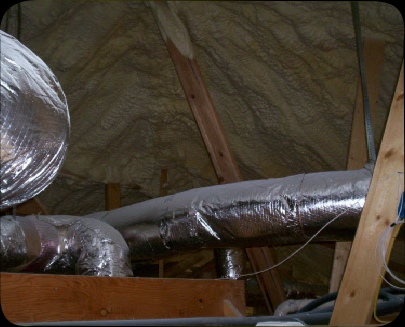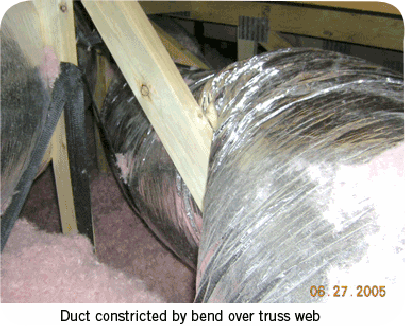



What is a High Performance HVAC system?
Producing the highest level of efficiency from your HVAC system deals with several elements that must be addressed in the design stage.
The first, insulation potential and tightness envelope of your building and passive solar orientation. The higher the R-
Second, Properly size the HVAC system for the building. Calculate proper CFM per room and establish an acceptable air exchange rate. Air exchange per room must be established per room to ensure the highest level of condition air can be obtained. On average across the United States an HVAC system usually operated at 63% of it designed potential. This is primarily due to the air delivery element and because the unit is not properly sized for the building. In most cases, concerning residential applications the HVAC units could be 40% smaller than those installed in the field. The HVAC system must be properly designed by a registered professional.
Third, Install a programmable thermostat. The thermostat is the most important part of the control of the unit. Times when the interior climate of the building is less important, the thermostat needs to reduce or turn off the HVAC system. To maintain air conditioning operation when the building is not occupied is a huge waste of energy.
Forth and final element is the delivery system. Air is a resistant force, meaning it reacts to obstacles. The less obstacles air has to go around, over and through; the more efficiently the air will travel from the pushing source (fan) to the desired destination (room). The most efficient duct system is round metal duct. Since there is no square corners to bounce off of or jagged humps to flow over-

Installation of high performance HVAC system showing metal duct work sealed with mastic.
Exposed metal duct work being installed inside the cooling/ heated space. This is most efficient use of a conditioned air because the delivery system is inside the space being conditioned. This will allow the system to more effectively deliver the conditioned air without having to pass it through (traditional application) a hot or cold attic space, where the condition air can loose a lot of its energy. This type of installation also ensures that in the event of a duct leak, the conditioned air will leak into the conditioned space and will not be lost to a non-
A example of a poorly installed flex duct system. Flex duct is not recommended for high performance HVAC systems because they dramatically restrict the air flow within them, causing the system to use more electricity. This problem is further compounded because the duct is impeded on a structural member in the attic space that further restricts the air flow

with minimum resistance to the desired location. Fiberglass and flex are easily installed into a building during the construction phase (makes then a favorite among builders) however, due to their highly restrictive interior surfaces; the air does not flow very easily; prompting the installer to increase the size of the unit further reducing the efficiency of the HVAC system. Metal Duct work can also greatly enhance the ability to maintain and clean a dirty or contaminated duct system by use of a spider without damaging the duct system. Fiberglass and flex duct work can not be cleaned once installed.
A High Performance HVAC system uses passive solar design principles, high insulation principles, round metal duct work, programmable thermostat and a properly sized HVAC unit to deliver only the required amount of performance.
